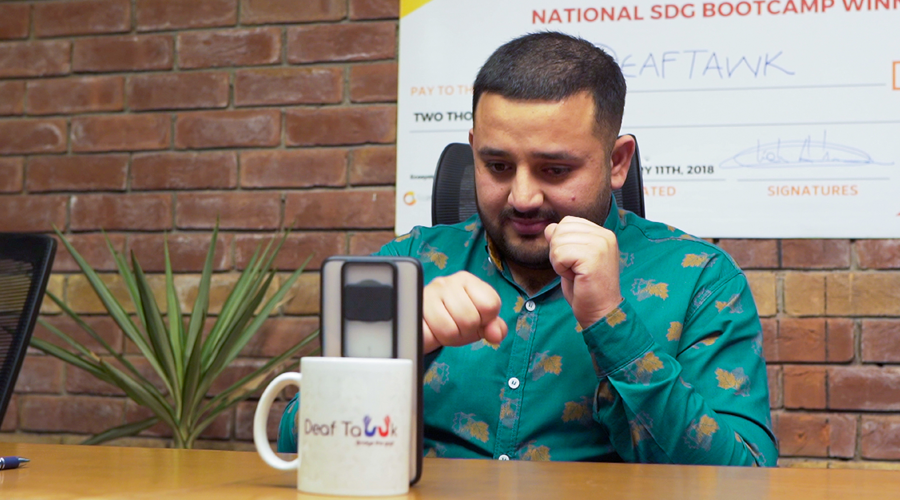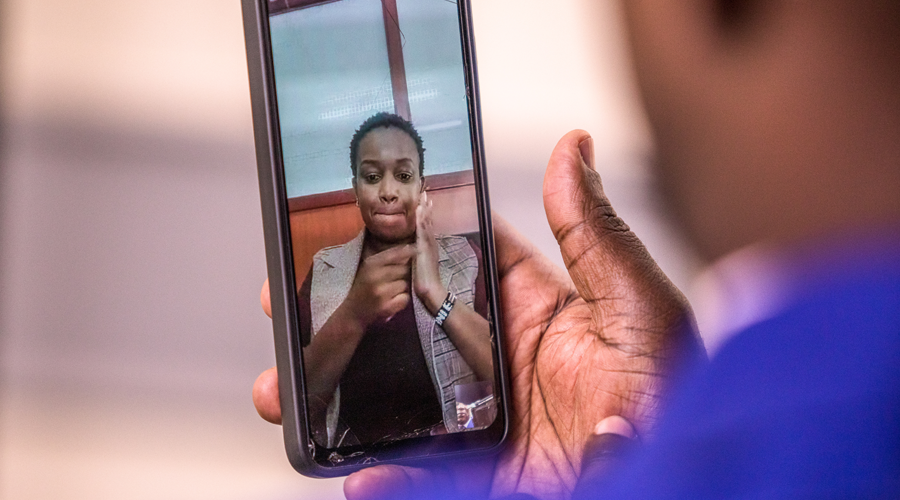Digital assistive technologies (AT) are a gateway for persons with disabilities to access life-enhancing services and opportunities that can enable them to live more independent and autonomous lives. In low- and middle-income countries (LMICs), nearly half (around 43%) of digital AT solutions are designed by start-ups. However, delivering these AT innovations for persons with disabilities at scale, in a commercially sustainable way, comes with several challenges for start-ups. The lower disposable incomes of persons with disabilities in LMICs and their lack of awareness about digital assistive technologies present challenges for strictly business-to-consumer (B2C) models, in which persons with disabilities are charged a service fee for using the AT innovation.
Our recent report draws out important lessons from the GSMA Innovation Fund for Assistive Tech start-ups. In the report, we share learnings on how these start-ups leveraged a range of business models such as Business-to-Government (B2G) and Business-to-Business (B2B) to diversify their revenue sources, drive scale or offset costs to end users. In this blog, we share additional learnings not covered in the report about implementing B2B partnerships for AT start-ups. In a B2B partnership, a business client pays for the use of AT service by its disabled employees or for enhanced accessibility of service provision to its customers with disabilities.

1. Understand business clients’ needs and preferences and showcase the value of using the AT solution for their employees or customers
To accelerate the uptake of AT solutions by corporate customers, start-ups should tailor their product offerings to the clients’ preferences. They can do this by implementing a trial period to allow clients and their employees or customers try out the product, see the value it brings and suggest improvements for better fit. This will also enable the start-up to better understand client requirements and how best to meet them. It is particularly important to showcase the value of the AT product, as often multiple corporate decision-makers will be involved in approving a B2B contract, further lengthening the time it takes to set up the right structure for B2B collaboration. An early trial period will enable the start-up and client to manage these challenges.
2. Ensure that marketing and pricing are appropriate for the select B2B approach
B2B models for digital AT solutions can fall into different categories of needs. For example, clients such as academic institutions or corporations that have a culture of inclusion (or aim to develop one) may want to leverage digital AT solutions to improve accessibility for their employees or students. For these types of business packages that involve serving the needs of a fixed number of users, the AT start-ups found that clients preferred fixed-term subscription plan rather than usage-based pricing models. However, clients who wanted to leverage AT solutions (e.g. sign language interpretation (SLI) services) to enhance service provision for a varying or undisclosed number of customers with disabilities, preferred a pay-as-you-use model. In the latter case, the fixed-term subscription model posed a challenge to rollout, as clients were unwilling to pay more than their business required, while start-ups typically do not have the capital needed to pay an upfront retainer fee to secure the sign language interpreters required to serve the business client’s customers on-demand. The pay-as-you-use model helps the clients to avoid paying subscription fees for a service that may not be fully utilised. Therefore, digital AT start-ups need to understand clients’ need and preferences and be aware of challenges they are likely to face in selecting the right pricing structure that works for both parties.
3. Demonstrate the value proposition and efficacy of the core AT solution for persons with disabilities before exploring B2B options
In a bid to enhance their commercial sustainability, AT start-ups may be tempted to pivot early to a B2B model or look for potentially lucrative opportunities in other markets to secure additional revenue and business sustainability. However, AT start-ups should focus on establishing their core B2C offering before seeking out new commercial partners. Scaling an AT solution too quickly can result not just in having a large volume of unsatisfied customers, but can also cause reputational damage among business clients, which can be hard to reverse. Scaling also brings with it new customer challenges that the start-up may not be ready for, such as provision of customer service to large customer bases. These need to be well thought out before expanding to B2B. Moreover, ensuring a high-quality B2C solution for persons with disabilities will increase customer uptake, thereby potentially opening B2B opportunities.
One of the Fund start-ups, Pakistan-based DeafTawk, spent its first few years trying to optimise the customer experience of their B2C solution. With evidence of high customer satisfaction and use of its SLI products by more than 1,500 users, DeafTawk pursued their first business client and expanded into a new market via B2B model.
4. Consider extending the reach of AT solutions to persons with disabilities via third-party organisations
Many persons with disabilities are unaware of the assistive technologies that are available in their markets. As such, AT providers can identify shared-value partnership models, e.g. a combination of B2B and B2C, in which they can reach customers through established organisations with links to persons with disabilities, with the cost of the service borne by the end consumers. This is a particularly useful approach to reach a wider range of users without the high overhead costs that may be associated with marketing and sales. The start-ups can then benefit from the brand credibility of their B2B partner.
For example, assistALL, providers of app-based on-demand sign language interpretation services in Kenya, partnered with Safaricom to embed the app on Safaricom’s M-Pesa Super App. This increased the visibility of assistALL app to M-Pesa Super App’s 3 million users and boosted assistALL app’s subscribers by approximately 600 users.

Reaching persons with disabilities with digital solutions at scale is challenging, especially in LMICs. To overcome the challenges of selling directly to customers via a B2C model, many digital AT innovations in LMICs tend to rely on B2B or a combination of B2B and B2C to reach persons with disabilities in a commercially sustainable way. These creative business models provide a greater opportunity to achieve scale. These learnings are relevant for start-ups wanting to improve implementation successes of sustainability B2B models for delivering AT solutions in LMICs.
This blog builds on our recent report about how start-ups in LMICs are reaching underserved persons with disabilities with innovative digital assistive tech solutions.
The Connected Society programme is funded by the UK Foreign, Commonwealth & Development Office (FCDO) and the Swedish International Development Cooperation Agency (SIDA), and is supported by the GSMA and its members.



